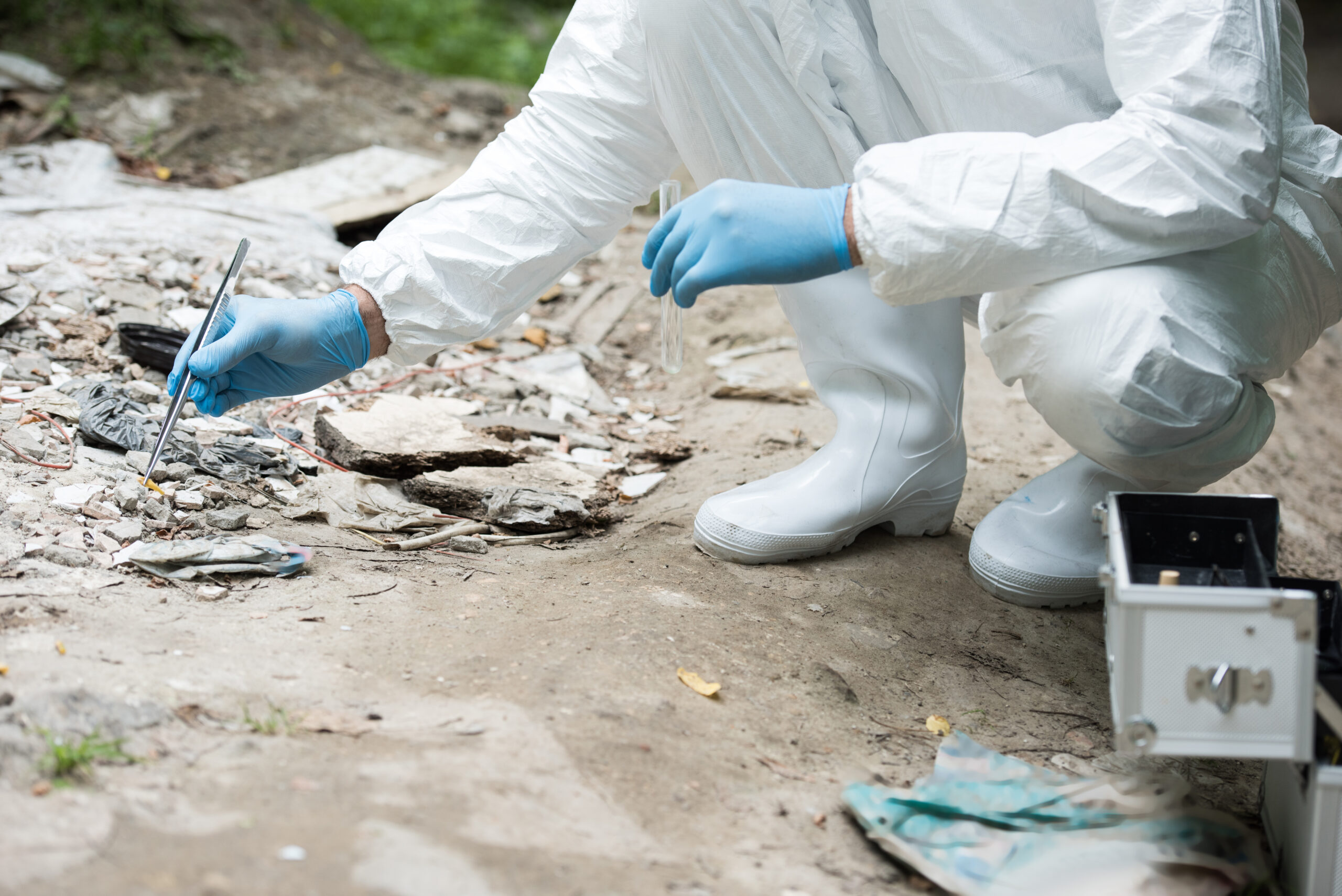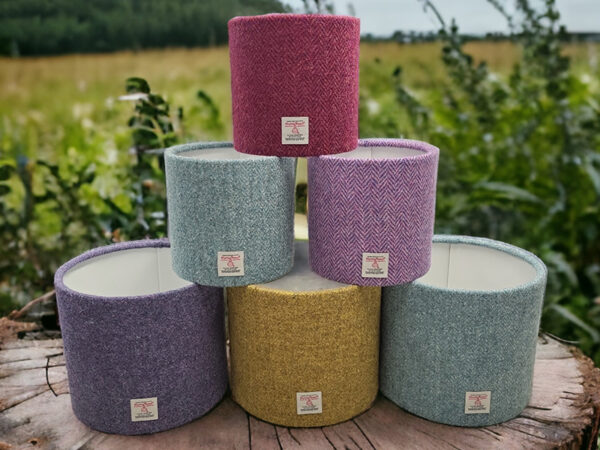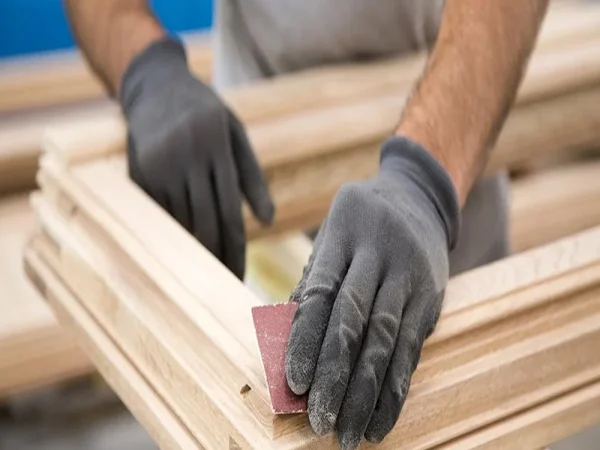The Importance of Understanding Asbestos Survey Reports
Why Asbestos Survey Reports Are Essential for Safety
Asbestos survey reports are not just paperwork; they are a critical tool for maintaining safety in any building environment. These reports identify the presence of asbestos-containing materials (ACMs), which, if disturbed, can release harmful fibers into the air. Recognizing and addressing these risks early can prevent severe health issues, including lung diseases and cancer.
Key reasons why these reports are vital:
- They provide a clear identification of areas containing asbestos.
- They guide safe management or removal of ACMs to reduce exposure risks.
- They ensure compliance with health and safety regulations, protecting both occupants and workers.
Legal Requirements Surrounding Asbestos Reports
In many jurisdictions, having an asbestos survey report is a legal obligation, particularly for older buildings. Regulations like the Control of Asbestos Regulations (CAR) 2012 mandate property owners or managers to assess and manage asbestos risks. Without a proper report, property owners may face legal penalties or liabilities for neglecting safety protocols.
These reports are often required:
- Before any renovation or demolition work begins.
- During property transactions to inform buyers of potential risks.
- For routine maintenance and inspections to ensure ongoing safety.
The Role of Dutyholders in Managing Asbestos Risks
Dutyholders, such as property managers or owners, bear the responsibility for managing asbestos risks. This includes commissioning an asbestos survey and acting on its findings. Failing to act on identified risks can endanger lives and lead to significant legal consequences.
Responsibilities of dutyholders include:
- Regularly reviewing and updating asbestos management plans.
- Sharing the survey findings with contractors and workers.
- Ensuring proper training and awareness for anyone likely to encounter ACMs.
By understanding and utilizing asbestos survey reports effectively, dutyholders can create safer environments, meet legal obligations, and mitigate the health hazards associated with asbestos exposure.
Key Components of an Asbestos Survey Report
Survey Methodology and Its Significance
The survey methodology is the backbone of any asbestos survey report. It explains how the survey was conducted, including the tools and techniques used to identify asbestos-containing materials (ACMs). Transparency in the methodology ensures that the report’s findings are reliable. Key details often include:
- Areas inspected: Were all parts of the property accessible, or were there exclusions like sealed voids?
- Sampling methods: How were materials tested—through bulk sampling, visual inspection, or other means?
- Compliance: Did the methodology adhere to relevant guidelines, such as the Health and Safety Executive’s (HSE) standards?
Understanding this section helps readers evaluate the thoroughness of the survey and identify any gaps that might require follow-up inspections.
Understanding the Executive Summary
The executive summary condenses the report’s findings into a concise, easy-to-read section. It typically highlights:
- Locations where ACMs were identified or presumed.
- Areas that couldn’t be accessed during the survey.
- Materials with high-risk scores based on their condition and potential for fiber release.
- Immediate actions or recommendations for safety.
This section is invaluable for quick decision-making and can be shared with contractors or other stakeholders to streamline the next steps.
The Role of Appendices in Providing Supporting Data
Appendices provide the detailed data that backs up the main findings of the report. These may include:
- Photographs of ACMs and their locations.
- Laboratory test results confirming asbestos presence.
- Annotated site diagrams showing surveyed areas.
These supporting materials are essential for anyone looking to verify the findings or plan actions like removal or sealing of ACMs. They also play a critical role in ongoing asbestos management processes by offering a visual and documented reference for future inspections.
Types of Asbestos Surveys and Their Applications
Management Surveys for Routine Assessments
Management surveys are the least invasive type of asbestos survey. They are designed to locate asbestos-containing materials (ACMs) that could be disturbed during the everyday use of a building. These surveys are ideal for occupied properties, as they focus on identifying risks without causing significant disruption. The purpose of a management survey is to help dutyholders maintain safety during normal occupancy and routine maintenance. Surveyors will typically avoid disturbing ACMs, ensuring minimal risk during the process. The resulting report often includes risk assessments for any in-situ ACMs, aiding in effective management.
Refurbishment Surveys for Renovation Projects
Refurbishment surveys are more intrusive and are conducted when a building or part of it is set to undergo renovation. The goal is to identify all ACMs in areas that will be affected by the work. This type of survey often involves destructive techniques to access hidden materials, such as those deep within walls or ceilings. By providing detailed information about asbestos presence, refurbishment surveys allow project teams to plan safely and avoid unexpected hazards during construction activities.
Demolition Surveys for Safe Tear-Downs
Demolition surveys are the most comprehensive and invasive type of asbestos survey. They are mandatory before any building or structure is demolished. These surveys aim to uncover all ACMs within the structure, including those that are not immediately visible. The information gathered ensures that the demolition process is carried out safely, protecting workers and the surrounding environment. Without a thorough demolition survey, there is a heightened risk of asbestos exposure during tear-down operations.
Interpreting Survey Results and Material Assessments
How to Analyze Material Assessment Scores
Material assessment scores are a key part of any asbestos survey report. These scores rank the potential risk of asbestos-containing materials (ACMs) based on their condition and the likelihood of fiber release. Understanding these scores is crucial for prioritizing safety actions. Typically, the scores are calculated using factors such as material type, surface treatment, and the likelihood of disturbance. A higher score indicates a greater risk, meaning those areas should be addressed first.
When reviewing the scores:
- Check for materials with high ratings—they pose the most immediate risk.
- Confirm the methodology used to generate the scores aligns with industry standards.
- Use the scores to prioritize areas for maintenance, repair, or removal.
Identifying High-Risk Asbestos-Containing Materials
Not all ACMs are equally dangerous. Some materials, like sprayed coatings or insulation, are more prone to fiber release than others, such as floor tiles. Identifying these high-risk materials is essential for effective risk management. Look for the following indicators:
- Materials in poor condition, such as crumbling or damaged surfaces.
- ACMs located in high-traffic or easily disturbed areas.
- Evidence of past repairs or modifications that may have compromised the material.
Once identified, these materials should be clearly marked and, if necessary, isolated to prevent accidental disturbance.
Using Risk Registers for Ongoing Management
A risk register is a living document that tracks all identified ACMs, their condition, and the associated risks. It serves as a roadmap for long-term asbestos management. Maintaining an up-to-date risk register ensures compliance and safety. Key elements of an effective risk register include:
- Accurate descriptions of each ACM, including location and condition.
- Regular updates following inspections or changes in the material’s status.
- Clear action plans for monitoring, repair, or removal.
Incorporating air sampling results, such as those measuring asbestos fiber concentrations in the air (air sampling results), can further refine the risk assessment process. This data provides a measurable indicator of the immediate hazard level, helping dutyholders make informed decisions.
By thoroughly interpreting survey results and maintaining detailed records, property managers and dutyholders can effectively minimize asbestos risks and ensure a safer environment for everyone involved.
Survey Limitations and Their Implications
Common Limitations in Asbestos Surveys
Asbestos surveys are comprehensive but not without their challenges. One key limitation is the inability to access certain areas of a property. For example, spaces like sealed voids, locked rooms, or areas obstructed by heavy machinery may remain unchecked. These inaccessible spots can harbor hidden asbestos-containing materials (ACMs), leaving potential risks unaddressed.
Another limitation is the sampling process itself. While inspectors aim to collect representative samples, the distribution of asbestos in materials can be uneven—similar to finding chocolate chips in a cookie. This variability means some asbestos fibers might go undetected if not enough samples are taken.
Lastly, survey reports often rely on visual inspection, which can miss asbestos hidden behind walls, under floors, or within structural components. Without destructive testing, these hidden hazards may only come to light during renovations or demolitions.
Addressing Inaccessible Areas in Reports
When a survey identifies areas that couldn’t be inspected, these must be clearly documented in the report. Dutyholders should treat these omissions seriously, as they represent unknown risks.
To manage these gaps, consider:
- Scheduling additional inspections once inaccessible areas become available.
- Using advanced tools, like endoscopic cameras, to explore hard-to-reach spaces.
- Consulting with specialists to assess whether destructive testing is warranted for critical areas.
By addressing these limitations proactively, property owners can reduce the likelihood of unexpected asbestos exposure during future projects.
Planning Additional Inspections for Comprehensive Coverage
If a survey highlights significant gaps in coverage, planning follow-up inspections is essential. This is particularly important for properties undergoing major renovations or sales. A thorough inspection ensures that all ACMs are identified and managed appropriately, minimizing health risks and legal liabilities.
For example, an incomplete asbestos report can significantly impact property value during a sale. Buyers may demand further assessments or negotiate lower prices due to the uncertainty. Careful management of the situation through additional inspections and clear documentation can help maintain property value and ensure safety.
In summary, while no asbestos survey is perfect, understanding its limitations and taking steps to address them can make a significant difference in managing risks effectively.
The Role of Field Inspections in Asbestos Surveys
Visual and Physical Assessments Explained
Field inspections are a cornerstone of asbestos surveys. They involve both visual and physical evaluations to identify materials that might contain asbestos. Inspectors carefully examine areas like walls, ceilings, and flooring, looking for signs of wear or damage that could indicate the presence of asbestos-containing materials (ACMs). This process ensures that no potential risks are overlooked. Inspectors also assess the condition and friability of materials, determining how easily they might release harmful fibers into the air.
Sampling Techniques for Accurate Results
Sampling is a critical part of field inspections. Small samples of suspect materials—such as sections of walls, tiles, or insulation—are carefully extracted for laboratory analysis. Typically, these samples are about ½ to 1 inch in size, ensuring minimal disruption to the building. In some cases, more invasive techniques may be required, such as removing coverings or accessing hard-to-reach areas. This step is vital for confirming whether a material contains asbestos and, if so, in what concentration.
Laboratory Testing for Material Confirmation
Once samples are collected, they are sent to accredited laboratories for detailed analysis. Techniques like polarized-light microscopy or transmission-electron microscopy are used to detect asbestos fibers within the material. Laboratories must meet strict standards to ensure reliable results, often holding certifications like the National Volunteer Laboratory Accreditation Program (NVLAP). The findings from these tests provide the data needed to create a comprehensive asbestos survey report, which serves as a guide for managing or removing ACMs.
Using Asbestos Survey Reports for Compliance
Ensuring Adherence to CAR 2012 Regulations
The Control of Asbestos Regulations 2012 (CAR 2012) lays down the legal framework for managing asbestos in non-domestic buildings. Asbestos survey reports are a cornerstone of compliance. They provide the necessary data to identify asbestos-containing materials (ACMs) and assess their risks. Dutyholders must ensure that the survey methodology aligns with Health and Safety Executive (HSE) guidelines, such as those outlined in HSG264. Failing to adhere to CAR 2012 can lead to severe penalties, including fines or legal action.
Avoiding Legal Liabilities Through Proper Management
Survey reports are not just about identifying hazards but also about mitigating legal risks. By acting on the findings, such as creating an asbestos management plan (AMP), dutyholders demonstrate due diligence. Key steps include:
- Incorporating survey results into the AMP.
- Training staff and contractors about asbestos risks.
- Scheduling regular reviews to update the management plan.
These actions not only protect building occupants but also safeguard dutyholders against summary convictions or lawsuits related to negligence.
The Importance of Sharing Reports with Contractors
When contractors are involved in refurbishment or demolition work, sharing asbestos survey reports is non-negotiable. The reports guide them on where ACMs are located and how to handle them safely. This reduces the likelihood of accidental exposure and ensures that all work complies with CAR 2012. Contractors can use the data to plan controlled removal or encapsulation of ACMs, ensuring both worker safety and regulatory compliance. Clear communication of survey findings fosters a safer working environment and prevents costly mistakes.
The Health Risks of Asbestos Exposure
Understanding the Dangers of Asbestos Fibers
Asbestos fibers are tiny, often invisible to the naked eye, but their impact on human health can be devastating. When materials containing asbestos are disturbed, they release these microscopic fibers into the air. Once inhaled, the fibers lodge in the lungs and other tissues, causing long-term damage. This exposure is directly linked to serious illnesses, including mesothelioma—a rare and aggressive cancer affecting the lining of the lungs or abdomen. Mesothelioma is just one of the many severe outcomes of asbestos exposure.
How ACMs in Poor Condition Pose Hazards
Asbestos-Containing Materials (ACMs) that are intact and undisturbed generally do not pose immediate risks. However, when these materials age, degrade, or are damaged, they become a significant hazard. Crumbling insulation, cracked tiles, or broken wall panels release asbestos fibers into the environment. Over time, exposure to airborne fibers can lead to chronic conditions such as asbestosis or pleural thickening. Benign lung diseases, though less severe than cancer, can still severely impact quality of life, causing breathing difficulties and persistent coughing.
Mitigation Strategies for Inhalation Risks
Preventing asbestos exposure starts with awareness and proper management. Here are some strategies to reduce risks:
- Seal or encapsulate ACMs: This prevents fibers from becoming airborne without requiring removal.
- Conduct regular inspections: Monitoring the condition of ACMs ensures early detection of potential hazards.
- Hire certified professionals for removal: DIY asbestos removal is dangerous and often illegal. Always rely on trained experts.
By understanding these risks and taking proactive measures, individuals and organizations can protect themselves and others from the harmful effects of asbestos exposure.
Best Practices for Managing Asbestos-Containing Materials
Sealing ACMs to Prevent Fiber Release
Managing asbestos-containing materials (ACMs) effectively starts with understanding their condition. If the material is intact and undisturbed, sealing or encapsulating it can be a practical solution. Encapsulation involves applying a sealant to lock in asbestos fibers, reducing the risk of release into the air. This method is particularly useful for materials in hard-to-reach areas or those that are unlikely to be disturbed. However, it’s crucial to monitor sealed ACMs periodically to ensure the seal remains intact and effective.
Regular Reinspection Surveys for Monitoring
Even when ACMs are managed in place, regular reinspections are necessary. These surveys help identify any changes in the condition of the material, such as wear or damage, that could increase the risk of fiber release. Dutyholders should schedule inspections at least annually, though more frequent checks may be needed for high-risk areas. Tracking these inspections through a detailed log ensures compliance with regulations like those outlined by the EPA’s asbestos laws.
Safe Removal and Disposal of Hazardous Materials
In cases where ACMs are damaged or located in areas prone to disturbance, removal becomes the safest option. This process must be carried out by licensed professionals who follow strict protocols to prevent airborne contamination. Proper disposal includes sealing the materials in labeled, leak-proof containers before transferring them to authorized disposal facilities. Following these work practices ensures that asbestos is handled safely and minimizes health risks, as highlighted in asbestos management guidelines.
The Future of Asbestos Management
Technological Advances in Surveying Methods
The field of asbestos management is rapidly evolving, thanks to emerging technologies that enhance the accuracy and efficiency of surveys. Drones, for instance, are being used to inspect hard-to-reach areas, reducing the need for physical access and minimizing risks. Additionally, advancements in imaging technology, such as thermal and hyperspectral imaging, allow for the detection of asbestos-containing materials (ACMs) without invasive procedures. These tools not only save time but also provide more detailed data, enabling more informed decision-making.
Evolving Regulations and Their Impact
Regulatory frameworks surrounding asbestos are continually being updated to address new findings and public health concerns. For example, the EPA’s proposed ban on ongoing uses of asbestos reflects a growing commitment to eliminating exposure risks. Such changes require businesses and dutyholders to stay informed and adapt their management practices accordingly. Failure to comply with updated regulations can lead to legal liabilities, making it imperative to integrate compliance into long-term planning.
The Importance of Ongoing Education for Dutyholders
Education remains a cornerstone of effective asbestos management. Dutyholders must understand their responsibilities, including the legal and safety implications of managing ACMs. Training programs and certifications help ensure that those in charge are equipped with the latest knowledge and skills. Moreover, staying informed about trends in asbestos litigation, as highlighted in this Legal Backgrounder, can prepare organizations for potential challenges. Continuous learning not only protects workers and occupants but also safeguards businesses from financial and reputational risks.
More Links
Robert King Mesothelioma Law Services











